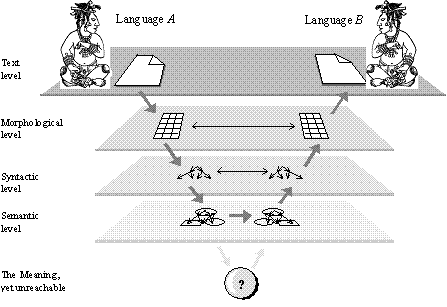
РЕЗОЛЮЦІЯ: Громадського обговорення навчальної програми статевого виховання
ЧОМУ ФОНД ОЛЕНИ ПІНЧУК І МОЗ УКРАЇНИ ПРОПАГУЮТЬ "СЕКСУАЛЬНІ УРОКИ"
ЕКЗИСТЕНЦІЙНО-ПСИХОЛОГІЧНІ ОСНОВИ ПОРУШЕННЯ СТАТЕВОЇ ІДЕНТИЧНОСТІ ПІДЛІТКІВ
Батьківський, громадянський рух в Україні закликає МОН зупинити тотальну сексуалізацію дітей і підлітків
Відкрите звернення Міністру освіти й науки України - Гриневич Лілії Михайлівні
Представництво українського жіноцтва в ООН: низький рівень культури спілкування в соціальних мережах
Гендерна антидискримінаційна експертиза може зробити нас моральними рабами
ЛІВИЙ МАРКСИЗМ У НОВИХ ПІДРУЧНИКАХ ДЛЯ ШКОЛЯРІВ
ВІДКРИТА ЗАЯВА на підтримку позиції Ганни Турчинової та права кожної людини на свободу думки, світогляду та вираження поглядів
- Гідрологія і Гідрометрія
- Господарське право
- Економіка будівництва
- Економіка природокористування
- Економічна теорія
- Земельне право
- Історія України
- Кримінально виконавче право
- Медична радіологія
- Методи аналізу
- Міжнародне приватне право
- Міжнародний маркетинг
- Основи екології
- Предмет Політологія
- Соціальне страхування
- Технічні засоби організації дорожнього руху
- Товарознавство продовольчих товарів
Тлумачний словник
Авто
Автоматизація
Архітектура
Астрономія
Аудит
Біологія
Будівництво
Бухгалтерія
Винахідництво
Виробництво
Військова справа
Генетика
Географія
Геологія
Господарство
Держава
Дім
Екологія
Економетрика
Економіка
Електроніка
Журналістика та ЗМІ
Зв'язок
Іноземні мови
Інформатика
Історія
Комп'ютери
Креслення
Кулінарія
Культура
Лексикологія
Література
Логіка
Маркетинг
Математика
Машинобудування
Медицина
Менеджмент
Метали і Зварювання
Механіка
Мистецтво
Музика
Населення
Освіта
Охорона безпеки життя
Охорона Праці
Педагогіка
Політика
Право
Програмування
Промисловість
Психологія
Радіо
Регилия
Соціологія
Спорт
Стандартизація
Технології
Торгівля
Туризм
Фізика
Фізіологія
Філософія
Фінанси
Хімія
Юриспунденкция
TRANSLATION AS A MULTISTAGE TRANSFORMATION
 FIGURE IV.13. The role of dictionaries and grammars in linguistic transformations.
FIGURE IV.13. The role of dictionaries and grammars in linguistic transformations.
|
The task of translation from one natural language to another is a good illustration of multistage transformation of linguistic information.
Suppose there is a text in a language A that is to be translated into language B. As we have already argued, word-by-word translation leads to very poor and useless results. To translate the text with highest possible quality, the following stages of transformation are necessary:
· First stage of analysis starts from the source text in the language A and gives its morphologic representation specific for language A.
· Second stage of analysis starts from the morphologic representation and gives the syntactic representation specific for language A.
· Third stage of analysis starts from the syntactic representation and gives some level of semantic representation. The latter can be somewhat specific to language A, i.e., not universal, so that additional intra-level operations of “universalization” of semantic representation may be necessary.
The problem is that currently it is still not possible to reach the true semantic representation, i.e., the true level of Meaning, consisting of the universal and thus standard set of semes. Therefore, all practical systems have to stop this series of transformations at some level, as deep as possible, but not yet at that of universal Meaning.
· The transfer stage replaces the labels, i.e., of the conventional names of the concepts in language A, to the corresponding labels of language B. The result is the corresponding quasi-semantic level of representation in language B. In some cases, additional, more complex intra-level operations of “localization” are necessary at this stage.
· First stage of synthesis starts from the quasi-semantic representation with few features specific for the language B, and gives the syntactic representation quite specific for this language.
· Second stage of synthesis starts from the syntactic representation, and gives the morphologic representation specific for language B.
· Third stage of synthesis starts from the morphologic representation, and gives the target text in language B.
In the initial stages, the transformations go to the deep levels of the language, and then, in the last stages, return to the surface, with the ultimate result in textual form once more. The deeper the level reached, the smaller the difference between the representations of this level in both languages A and B. At the level of Meaning, there is no difference at all (except maybe for the labels at semes). The deeper the level reached during the transformations, the smaller the differences that have to be ignored, and the better the quality of translation (see Figure IV.14). This scheme shows only the general idea of all these representations.
 FIGURE IV.14. Translation as multistage transformation.
FIGURE IV.14. Translation as multistage transformation.
|
The given scheme works for an arbitrary pair of natural languages. However, if the two languages are very similar in their structure, the deeper stages of the transformation might not be necessary.
For example, if we translate from Spanish into Portuguese, then, because these two languages differ mainly in their lexicon, it can be sufficient to use only the first stage of analysis and the last stage of synthesis, just replacing each Spanish word by the corresponding Portuguese one on the morphologic level.
In Figure IV.14 this would correspond then to the “horizontal” transition directly on this level.
Читайте також:
- Antonymic translation
- AUTOMATIC TRANSLATION
- B) Partial Translation Equivalents
- Basic translation theories
- By Descriptive or Interpreting Translation
- CHAPTER 2. COLLOCATIONAL ASPECTS OF TRANSLATION
- Definition of way of crystallization at polymorphic transformations
- Equilibrium and phase transformations of matter
- Exercise 2. Make transformations according to the model.
- Exercise 41. Translate die following sentences into English. Pay attention to die translation of the modal verbs.
- Faithful and equivalent translation.
- Free Translation
| <== попередня сторінка | | | наступна сторінка ==> |
| MORE ON HOMONYMY | | | TWO SIDES OF A SIGN |
|
Не знайшли потрібну інформацію? Скористайтесь пошуком google: |
© studopedia.com.ua При використанні або копіюванні матеріалів пряме посилання на сайт обов'язкове. |